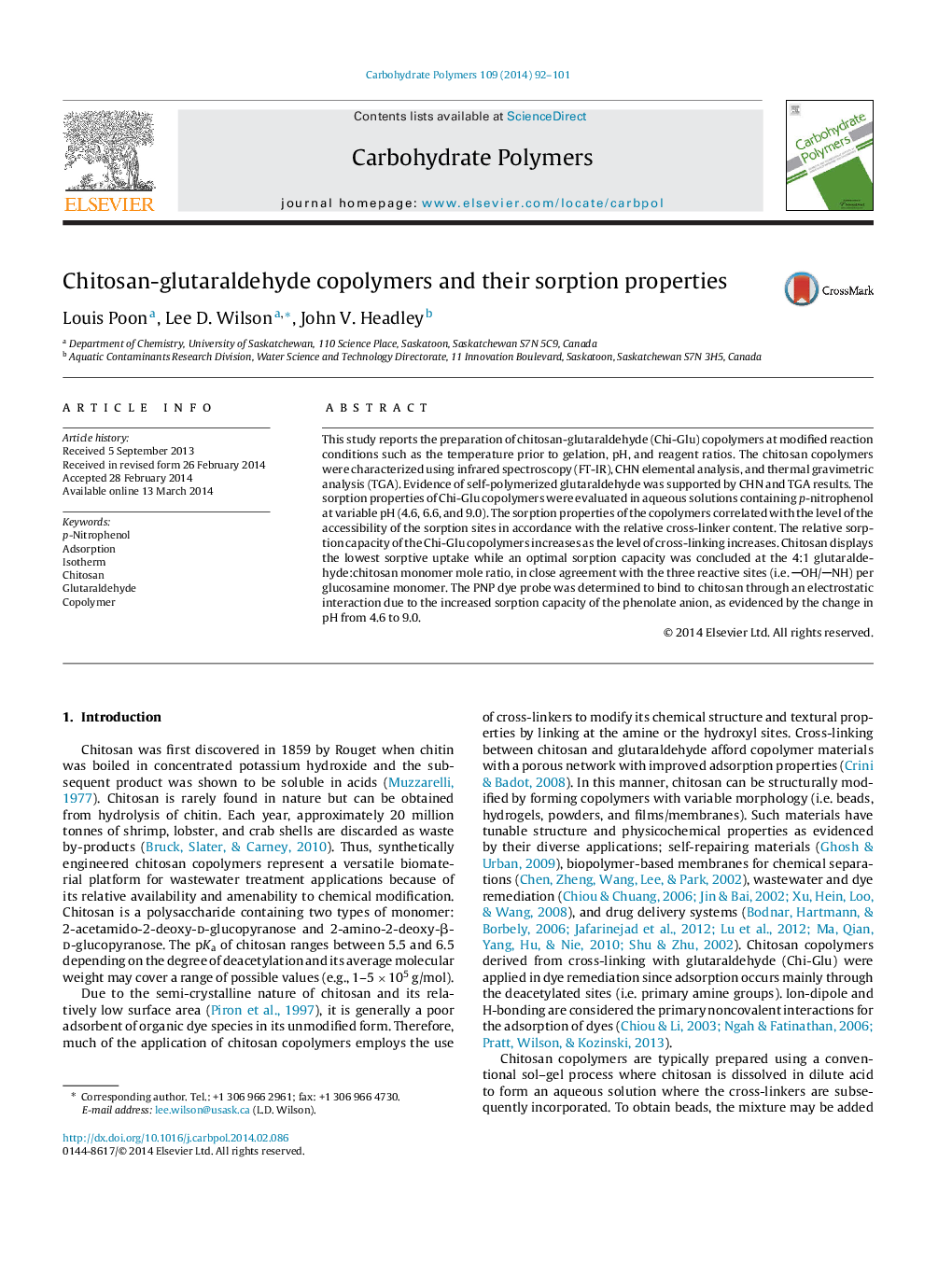| Article ID | Journal | Published Year | Pages | File Type |
|---|---|---|---|---|
| 1383501 | Carbohydrate Polymers | 2014 | 10 Pages |
•Chitosan-glutaraldehyde (Chi-Glu) copolymers were prepared at various mole ratios and display tunable sorption behaviour.•Chi-Glu copolymers display enhanced sorption with p-nitrophenol (PNP) relative to as-received chitosan.•Sorptive uptake of PNP by Chi-Glu copolymers increases with copolymer cross-link density and solution pH.•p-Nitrophenolate is bound more favourably relative to p-nitrophenol for the Chi-Glu copolymers.
This study reports the preparation of chitosan-glutaraldehyde (Chi-Glu) copolymers at modified reaction conditions such as the temperature prior to gelation, pH, and reagent ratios. The chitosan copolymers were characterized using infrared spectroscopy (FT-IR), CHN elemental analysis, and thermal gravimetric analysis (TGA). Evidence of self-polymerized glutaraldehyde was supported by CHN and TGA results. The sorption properties of Chi-Glu copolymers were evaluated in aqueous solutions containing p-nitrophenol at variable pH (4.6, 6.6, and 9.0). The sorption properties of the copolymers correlated with the level of the accessibility of the sorption sites in accordance with the relative cross-linker content. The relative sorption capacity of the Chi-Glu copolymers increases as the level of cross-linking increases. Chitosan displays the lowest sorptive uptake while an optimal sorption capacity was concluded at the 4:1 glutaraldehyde:chitosan monomer mole ratio, in close agreement with the three reactive sites (i.e. OH/NH) per glucosamine monomer. The PNP dye probe was determined to bind to chitosan through an electrostatic interaction due to the increased sorption capacity of the phenolate anion, as evidenced by the change in pH from 4.6 to 9.0.
